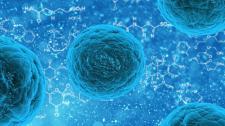A Brief Roundup of Stem Cell News

Scientifically, socially and financially, the stem cell field is in the news. Here are links to some of the most significant items.
- A European team has developed a line of human stem cells that self-organizes into “a structure that resembled a human embryo that is roughly 18 to 21 days old.” These gastruloids are not complete embryos, cannot develop into embryos, do not have cells that could even theoretically develop into brain cells, and tend to curl up and die after three days. But they may enable scientists to study developmental processes without letting real embryos develop beyond the traditional 14-day limit.
- Scientists at the Washington University School of Medicine in St. Louis have managed to transform induced pluripotent stem cells (iPSCs) to develop into cells that are precursors for the placenta. This also may help scientists to figure out why some pregnancies fail.
- UC Davis Professor Paul Knoepfler, whose blog, The Niche, is essential reading, is an industry watchdog as well as a research scientist who runs the Knoepfler Lab. He focuses on clinics that sell dubious &/or dangerous “stem cell treatments” to desperate patients, and right now he is not happy with the pace of enforcement, specifically in California:
Medical Board of California is slowly failing on stem cell clinic problem
- In related news, Knoepfler also keeps track of the costs of stem cell treatments and related technologies, partly by polling his readership (some of whom disagree with his assessments of efficacy) at least annually. The latest results, with considerable analysis and data from many other sources, were published on June 16. Costs vary greatly, with the most common response being in the range $10–20,000, though a few people are spending over $100,000.
- Last week, The Niche also published a good summary of research efforts that hope to use stem cell and related technologies to treat COVID-19. Knoepfler is skeptical about the short-term prospects, while remaining a strong proponent of stem cell-based regenerative medicine therapies.
Meanwhile, the not-really-retired journalist David Jensen follows and comments on stem cell news at his California Stem Cell Report. He founded the blog in 2005, after 22 years with The Sacramento Bee, specifically to monitor the California Institute for Regenerative Medicine (CIRM), which is finally running out of money. Enough signatures have probably been gathered* to place a new Proposition on the November ballot, which would save CIRM if passed, but this may be a difficult year to convince California voters to spend more money. Will Jensen be forced into another retirement?
*Update: The California Secretary of State announced on June 22 that enough signatures have now been verified. Jensen published an analysis in Capitol Weekly, and a more complete version at California Stem Cell Report, both including comments from Robert Klein, who organized the initiative, and from Marcy Darnovsky of CGS, who noted that it “does little to ease the serious concerns about CIRM that have been voiced for years by the Center for Genetics and Society, other public interest advocates, and researchers,” and detailed several.



